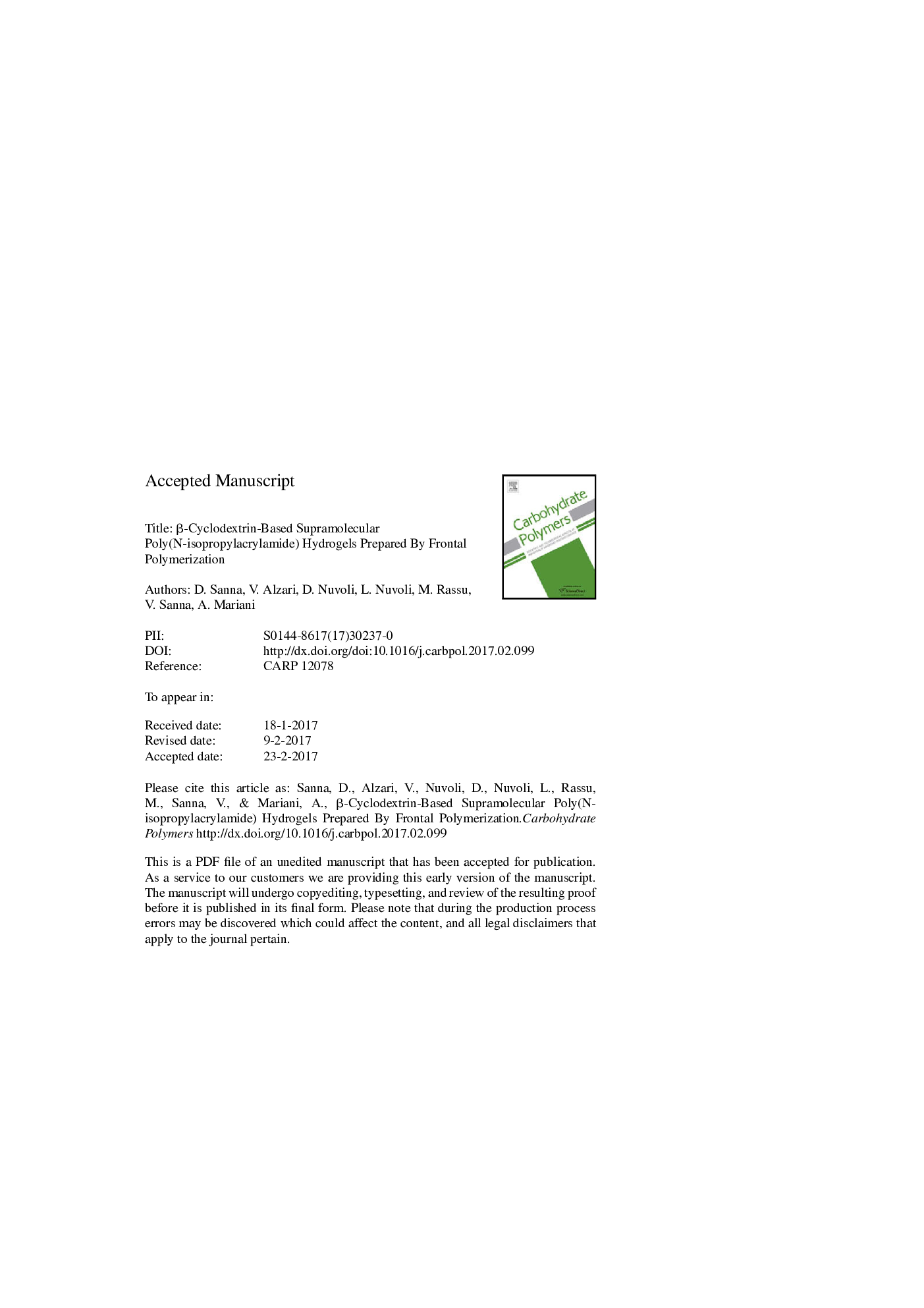| Article ID | Journal | Published Year | Pages | File Type |
|---|---|---|---|---|
| 5157354 | Carbohydrate Polymers | 2017 | 21 Pages |
Abstract
Frontal polymerization (FP) was successfully applied to the synthesis of poly(N-isopropylacrylamide)-grafted-acryloyl-β-cyclodextrin supramolecularly crosslinked hydrogels. It was established that acryloyl-β-cyclodextrin (AβCD) allowed performing successful frontal polymerizations with N-isopropylacrylamide even in the absence of any covalent crosslinker, which is something generally required. It was found that the swelling properties of the resulting hydrogels can be tuned by varying the amount of AβCD. Namely, when little amounts of this non-covalent crosslinker were used, superabsorbent hydrogels were obtained. Hydrogels containing also a covalent crosslinker were also prepared for comparison. These latter exhibited swelling ratios that are much lower than the others.
Keywords
MBAmPNIPAAmPolypseudorotaxaneγ-cyclodextrinN-IsopropylacrylamideβCDDimethylsulfoxide (PubChem CID: 679)α-cyclodextrinαCDFront velocityβ-CyclodextrinDSCPPRtmaxAPsDMSOglass transition temperatureDimethylsulfoxideCyclodextrinNIPAAmPoly(N-isopropylacrylamide)Poly(ethylene glycol)Frontal polymerizationPEGDifferential scanning calorimetry
Related Topics
Physical Sciences and Engineering
Chemistry
Organic Chemistry
Authors
D. Sanna, V. Alzari, D. Nuvoli, L. Nuvoli, M. Rassu, V. Sanna, A. Mariani,
